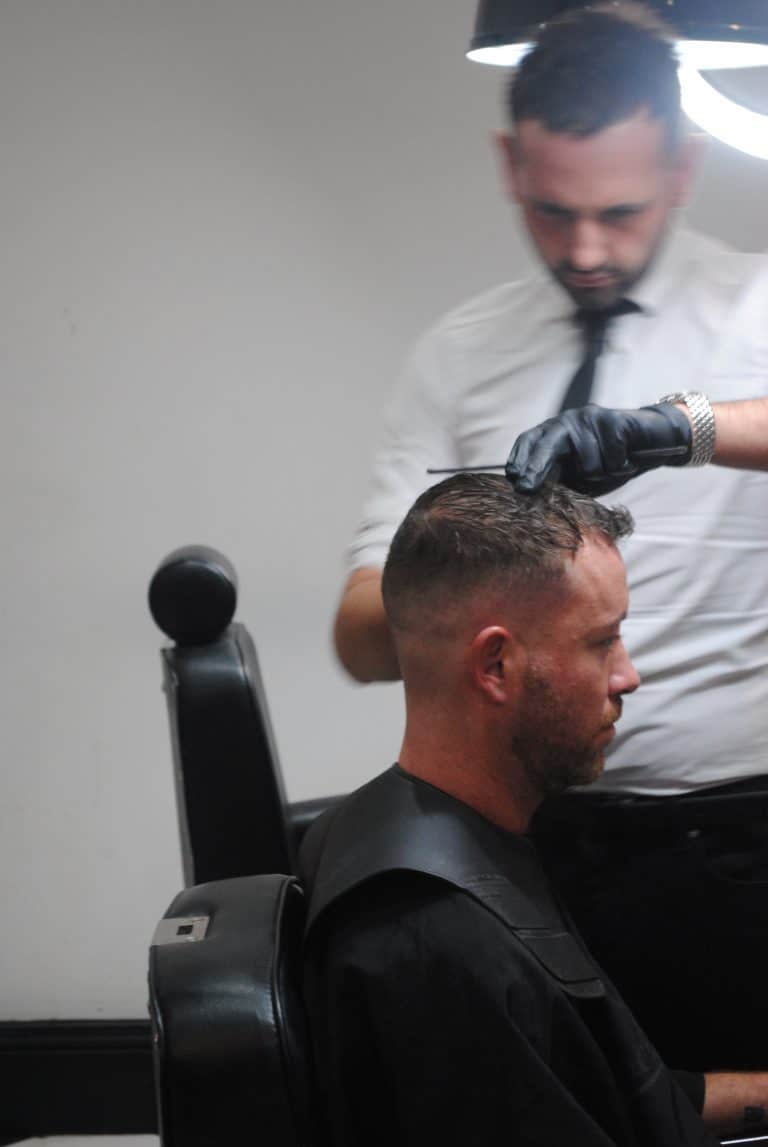5 Steps To Combat Thinning Hair For Men
Over the years, many men have faced the challenge of dealing with thinning hair. But fear not, combating this common issue is possible with the right knowledge and approach.
In this blog post, we will discuss five vital steps that men can take to address thinning hair and promote healthy hair growth. By following these simple yet effective tips, you can take control of your hair health and boost your confidence. Let’s dive in!
Step One: Diagnosis and Understanding the Underlying Causes
Genetic Factors in Male Pattern Baldness
Before we investigate into combatting thinning hair, it’s crucial to understand the underlying causes.
By the time they reach 35, around two-thirds of men in America will experience noticeable hair loss to some extent. By age 50, approximately 85% of men will have significantly thinning hair. Additionally, roughly 25% of men who deal with male pattern baldness will start losing hair before they turn 21.
One common factor behind thinning hair in men is male pattern baldness, which is primarily influenced by genetic factors. This hereditary condition can result in hair loss and thinning at the crown and temples, following a distinct pattern.
- Male pattern baldness is typically passed down through generations.
- It is linked to the hormone dihydrotestosterone (DHT) in the scalp.
Any effective treatment plan for thinning hair must address the genetic component of male pattern baldness.
Lifestyle and Environmental Causes
Causes of thinning hair in men can also stem from lifestyle and environmental factors. Factors such as poor nutrition, high stress levels, smoking, and exposure to pollutants can contribute to hair loss and thinning.
Additionally, harsh hair products, excessive styling, and tight hairstyles can damage hair follicles and lead to thinning over time.
Step Two: Effective Hair Care Routine
Choosing the Right Products for Thinning Hair
Routine maintenance of your hair is crucial when combating thinning hair. When choosing products for thinning hair, look for shampoos and conditioners formulated specifically to add volume and thickness.
Avoid products with harsh chemicals that can further weaken your hair strands. Opt for hair care products enriched with vitamins, minerals, and proteins to nourish your scalp and promote hair growth.
Essential Hair Care Practices to Strengthen Hair
Choosing the right hair care practices can make a significant impact on the strength and thickness of your hair. Regularly massaging your scalp stimulates blood flow and promotes hair growth.
Additionally, using a wide-tooth comb to detangle wet hair and avoiding excessive heat styling can prevent breakage and damage. Trimming your hair regularly can also help to eliminate split ends and improve the overall health of your hair.
Products should always be chosen with care, ensuring they are gentle on the scalp and hair. It’s vital to read the labels and opt for products that are sulfate-free and contain natural ingredients like biotin, keratin, and collagen, which can help strengthen and protect your hair from further damage.
Step Three: Nutrition and Supplements for Hair Health
Key Nutrients for Hair Growth
Now, let’s talk about the necessary nutrients that promote healthy hair growth. To combat thinning hair, include a balanced diet rich in vitamins such as Biotin, Vitamin D, Vitamin E, and minerals like Iron and Zinc. These nutrients play a crucial role in strengthening hair follicles and promoting hair growth.
The Role of Supplements in Hair Care
Carefully selected supplements can also play a significant role in enhancing hair health. Incorporating supplements like Omega-3 fatty acids, Biotin, and Vitamin E can complement your diet and provide additional support for hair growth.
However, it is important to consult with a healthcare professional before starting any new supplement regimen.
Hair supplements are not a magical solution for thinning hair, but when combined with a nutrient-rich diet, they can help improve the overall health and appearance of your hair. Bear in mind, consistency and patience are key when it comes to seeing results from nutritional and supplemental changes in your hair care routine.
Step Four: Professional Treatments and Therapies
The Benefits of Consulting with a Trichologist
Consulting with a trichologist can provide valuable insights into the underlying causes of your thinning hair.
These hair and scalp specialists can assess your condition, recommend personalized treatments, and monitor your progress over time. By seeking professional help, you can address your hair loss concerns with expert guidance and tailored solutions.

Advanced Hair Loss Treatments and Procedures
Any advanced hair loss treatments and procedures should be conducted under the supervision of qualified professionals. Here’s a breakdown of some of the most effective options available:
- Platelet-Rich Plasma (PRP) Therapy:
- Hair Transplantation Procedures:
With advancements in technology and research, new treatments like PRP therapy and hair transplants offer promising results for combating hair loss. It’s imperative to consult with a hair specialist to determine the most suitable option for your specific needs and goals.
- Low-Level Laser Therapy (LLLT):
- Scalp Micropigmentation (SMP):
Step Five: Embracing and Adapting to Hair Changes
Hairstyling Tips for Thinning Hair
To combat thinning hair, consider opting for shorter hairstyles as they can create an illusion of thicker hair. Avoid comb-overs or any styles that try to hide the thinning areas, as they often accentuate the problem.
Embrace your natural hair texture and work with a professional stylist to find a cut that suits your hair type and face shape. Be mindful of, less is more when it comes to styling products, as excessive use can weigh down the hair and make it look even thinner. Any hair products you use should be lightweight and add volume.
When to Consider Hair Replacement Options
For men experiencing advanced stages of hair loss where the thinning is significant and cannot be easily managed with styling techniques, it may be time to consider hair replacement options. It’s important to consult with a qualified hair restoration specialist to discuss potential solutions like hair transplants or non-surgical hair replacement systems. It’s crucial to address hair loss early on to determine the most effective course of action and achieve the best results.
Final Words
With this in mind, it’s important for men to take action and combat thinning hair before it becomes a bigger issue. By following these 5 steps – from consulting with a professional to using specific products and adopting a healthy lifestyle – men can effectively address and manage their hair thinning concerns. Keep in mind, early intervention is key in maintaining a full head of hair and boosting confidence. So don’t wait, start implementing these steps today and take control of your hair health!







